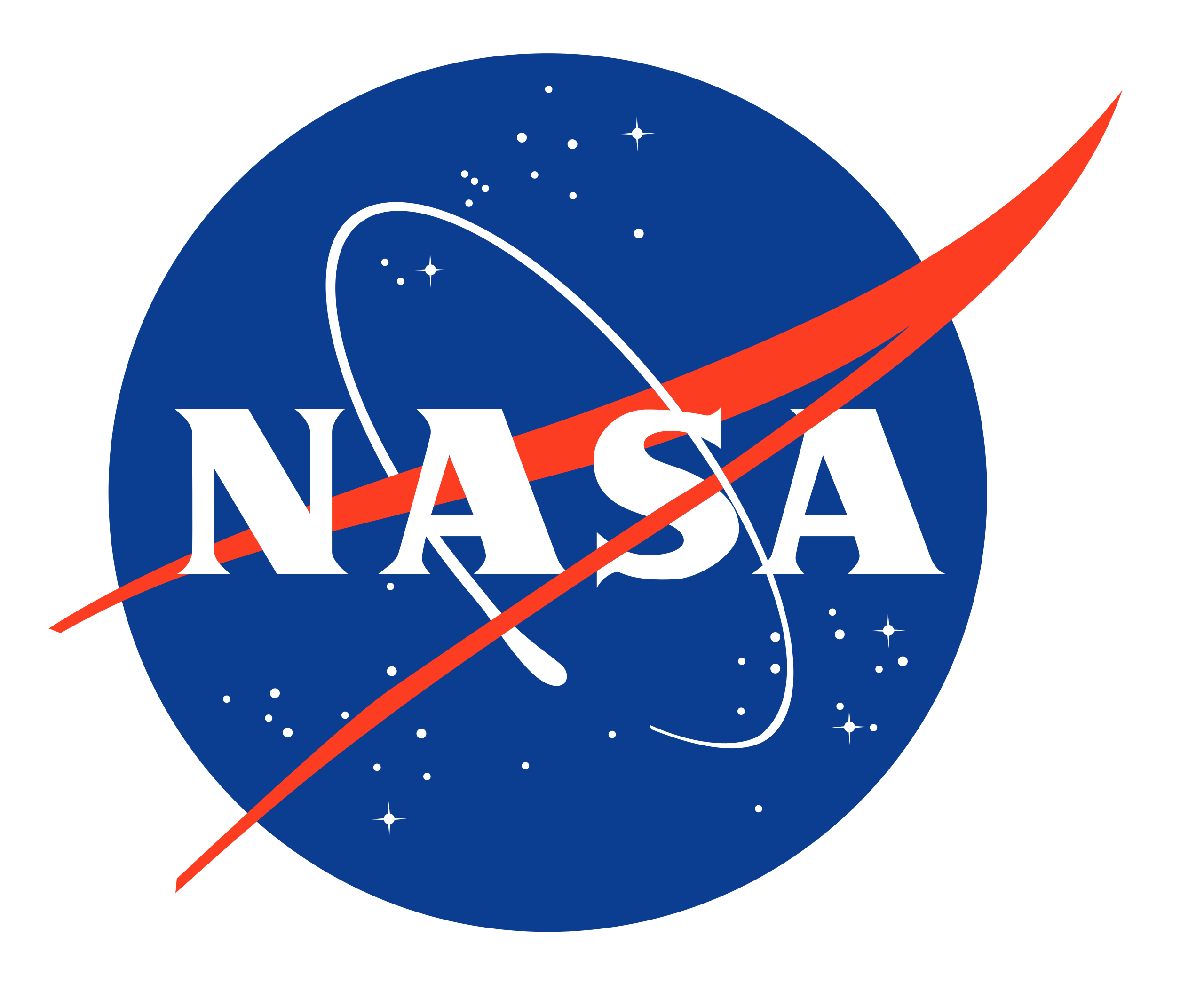
Credit: NASA/JPL-Caltech/H. Kobulnicky (Univ. of Wyoming)
Observation • October 12th, 2004 • ssc2004-16a1
ssc2004-16a1
This infrared image taken by NASA's Spitzer Space Telescope shows a globular cluster previously hidden in the dusty plane of our Milky Way galaxy. Globular clusters are compact bundles of old stars that date back to the birth of our galaxy, 13 or so billion years ago. Astronomers use these galactic "fossils" as tools for studying the age and formation of the Milky Way.
Most clusters orbit around the center of the galaxy well above its dust-enshrouded disc, or plane, while making brief, repeated passes through the plane that each last about a million years. Spitzer, with infrared eyes that can see into the dusty galactic plane, first spotted the newfound cluster during its current pass.
The red streak behind the core of the cluster is a dust cloud, which may indicate the cluster's interaction with the Milky Way. Alternatively, this cloud may lie coincidentally along Spitzer's line of sight.
Follow-up observations with the University of Wyoming Infrared Observatory helped set the distance of the new cluster at about 9,000 light-years from Earth -- closer than most clusters -- and set the mass at the equivalent of 300,000 Suns. The cluster's apparent size, as viewed from Earth, is comparable to a grain of rice held at arm's length. It is located in the constellation Aquila.
Astronomers believe that this cluster may be one of the last in our galaxy to be uncovered.
This image composite was taken on April 21, 2004, by Spitzer's infrared array camera. It is composed of images obtained at four wavelengths: 3.6 microns (blue), 4.5 microns (green), 5.8 microns (orange) and 8 microns (red).
About the Object
- Name
- GLIMPSE-C01
- Type
- Star > Grouping > Cluster > Globular
- Distance
- 10,000 Light Years
Color Mapping
| Band | Wavelength | Telescope |
| Infrared | 3.6 µm | Spitzer IRAC |
| Infrared | 4.5 µm | Spitzer IRAC |
| Infrared | 5.8 µm | Spitzer IRAC |
| Infrared | 8.0 µm | Spitzer IRAC |
Astrometrics
- Position (J2000)
- RA =18h 48m 49.1s
- Dec = -1° 29' 48.2"
- Field of View
- 6.0 x 6.0 arcminutes
- Orientation
- North is 63.3° left of vertical







